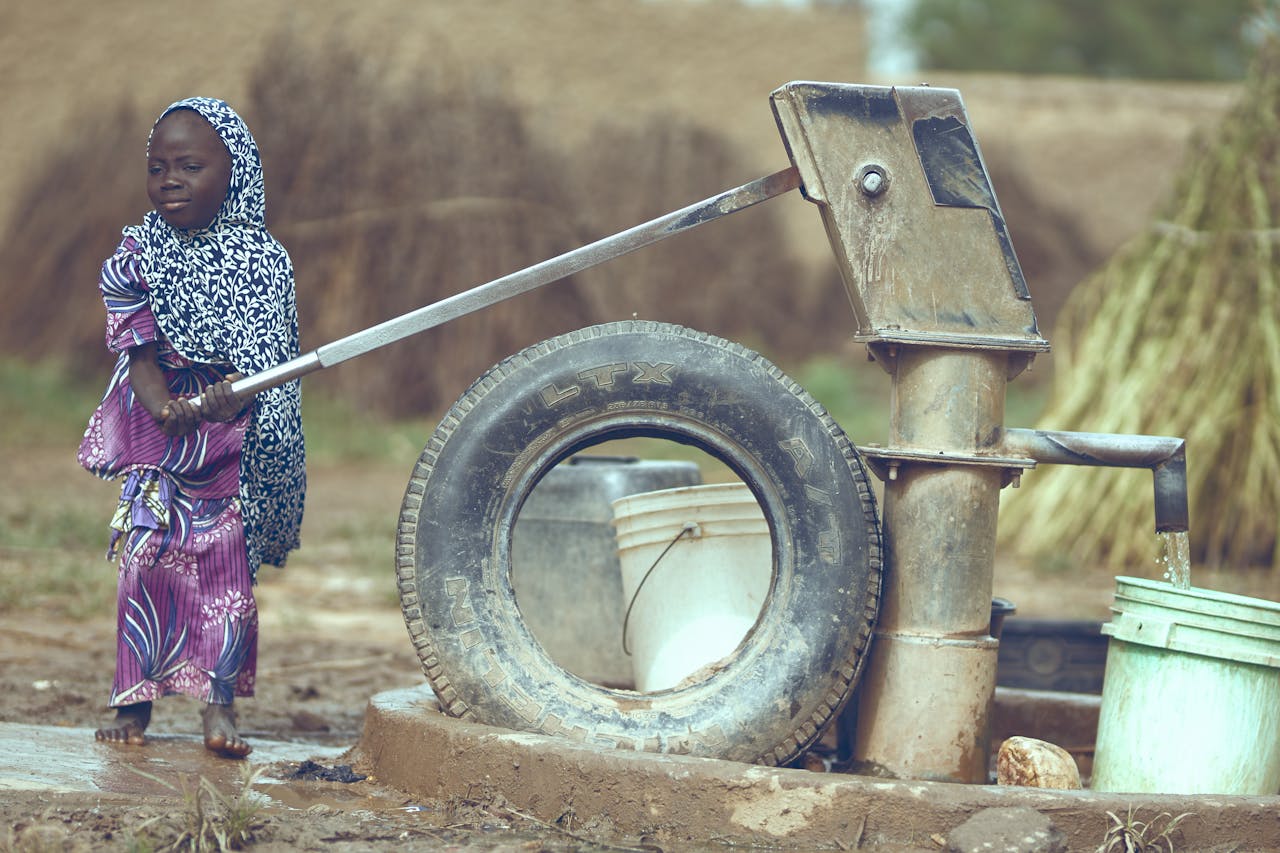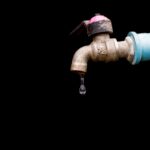Future-Proofing Water Access: Sustainable Solutions for Tomorrow

Water is a critical resource for life, yet global access to it is increasingly under threat. With climate change, rapid urbanization, and population growth, many communities face water shortages and declining water quality. According to the UN, by 2030, if progress doesn’t quadruple, billions of people will lack access to safe water, sanitation, and hygiene which is the most basic need for health and well being. Sustainable water solutions are no longer optional – they are essential for ensuring water security for future generations. Future-proofing water access involves proactive planning, investment, and innovative solutions to address both current and upcoming challenges.
Understanding the Current Challenges
Water scarcity impacts regions like sub-Saharan Africa and South Asia the most, where millions struggle to access clean water. Agriculture, which uses 70% of global freshwater, is plagued with inefficiencies, while industries and households contribute to wastage and pollution. Furthermore, water bodies worldwide are contaminated by industrial effluents, pesticides, and untreated waste. The UN highlights that without swift action, water stress could intensify conflicts and hinder global development.
Embracing Technological Innovations
Advancements in technology offer hope for sustainable water management. Desalination technologies, such as reverse osmosis, are increasingly efficient and accessible, transforming seawater into potable water. Smart water management systems powered by IoT monitor and optimize water usage, reducing wastage. Renewable energy technologies, like solar-powered water pumps, ensure energy-efficient water access in remote areas. These innovations exemplify how technology can bridge water gaps sustainably.
Strengthening Water Governance
Effective governance is pivotal for equitable water distribution. Policies must ensure fair allocation, protect water sources, and prevent over-extraction. Community involvement in water resource management fosters ownership and accountability. Governments, NGOs, and private organizations should collaborate to create frameworks that prioritize both human and ecological needs. For example, India’s water governance reforms have shown how integrating local communities can improve water management outcomes.
Nature-Based Solutions for Sustainable Water Management
Nature offers proven solutions for water challenges. Restoring wetlands and forests enhances water filtration and storage capacity. Rainwater harvesting systems, practiced traditionally in many cultures, are being reintroduced in modern contexts. For instance, China’s “Sponge Cities” integrate green infrastructure to manage stormwater efficiently. Blending traditional water conservation methods with modern innovations is vital for ecological and human harmony.
Promoting Water Conservation
Water conservation begins with awareness. Educational campaigns emphasizing the importance of water-saving habits have a profound impact. In agriculture, techniques like drip irrigation and crop rotation reduce water use. Industries can adopt closed-loop water systems to recycle wastewater. On an individual level, simple actions like fixing leaks or reducing unnecessary water use can collectively make a significant difference.
Investing in Infrastructure Resilience
Resilient infrastructure ensures water systems withstand environmental and human pressures. For instance, constructing climate-resilient reservoirs and pipelines can prevent water loss during floods or droughts. Regular maintenance of existing infrastructure also minimizes inefficiencies. Governments and international organizations must allocate funds strategically to ensure water systems can adapt to changing climates and growing demands.
Tackling Inequalities in Water Access
Water access remains unequal, with rural areas and marginalized communities often bearing the brunt. Addressing these inequalities involves developing targeted solutions, such as installing solar-powered boreholes in remote areas or mobile water purification units for displaced populations. Additionally, prioritizing gender-inclusive approaches ensures women, who are disproportionately affected, have equal access to clean water.
Global Cooperation and Partnerships
Water issues transcend borders, making global collaboration essential. International organizations like the UN and World Bank facilitate partnerships that share resources, expertise, and best practices. Countries like Singapore and Israel, known for their innovative water management, offer valuable lessons for others. Additionally, treaties addressing transboundary water conflicts, such as the Nile Basin Initiative, underscore the importance of cooperation in ensuring water security.
Climate Change Adaptation and Water Access
Climate change exacerbates water scarcity through prolonged droughts, unpredictable rainfall patterns, and the depletion of freshwater sources. Adapting water access strategies to address these challenges is crucial. Communities can implement rainwater harvesting systems to counter erratic rainfalls, while large-scale investments in desalination plants can supplement dwindling freshwater supplies. Enhancing the climate resilience of existing water infrastructure ensures that communities remain equipped to handle extreme weather conditions.
Programs promoting reforestation and wetland restoration also help regulate local climates and maintain the water cycle, offering a sustainable response to the environmental impacts of climate change. Integrating climate adaptation strategies into water access initiatives is no longer optional – it is a necessity for long-term water security.
Education and Capacity Building for Sustainable Water Use
Education plays a pivotal role in ensuring sustainable water practices. Communities need knowledge and tools to make informed decisions about water use and conservation. Training sessions on water-efficient farming, sustainable irrigation, and proper wastewater management can empower individuals to reduce wastage.
Schools and local organizations can integrate water education into curriculums, fostering awareness among young people. Practical demonstrations, like the use of eco-friendly technologies or maintenance of water systems, enhance the learning experience. Empowering communities through education ensures long-term commitment to water sustainability, creating a ripple effect of positive change across generations.
The Intersection of Water Access and Public Health
Clean water is essential for health and hygiene. Contaminated water sources contribute to diseases like cholera, dysentery, and typhoid, which disproportionately affect vulnerable populations. Ensuring water access directly reduces the incidence of waterborne illnesses, lowering healthcare costs and improving quality of life.
Access to clean water also supports sanitation systems, which are integral to public health. Hygiene initiatives like hand washing campaigns, coupled with reliable water access, significantly curtail the spread of diseases. By prioritizing water access, we address one of the most fundamental pillars of global health.
Integrating Renewable Energy with Water Systems
Renewable energy sources, such as solar and wind, are increasingly vital for powering water access systems in remote and off-grid areas. Solar-powered pumps, for example, are cost-effective, environmentally friendly, and require minimal maintenance compared to traditional fuel-powered systems.
By harnessing renewable energy, communities reduce their reliance on non-sustainable power sources, lowering operational costs and environmental impact. Partnerships between energy providers, local governments, and water-focused NGOs have proven effective in scaling these solutions, creating a sustainable infrastructure for long-term water access.
Digital Innovations in Water Management
Technology is revolutionizing water management through tools like mobile apps and IoT-enabled devices. Apps such as mWater allow for real-time monitoring of water quality and availability, ensuring quick responses to contamination issues. Smart meters help track water usage, reduce wastage, and provide actionable data for policy-making.
Digital platforms also enable community participation, allowing residents to report broken pipes or irregularities. These technological solutions bridge the gap between providers and users, fostering accountability and transparency in water management systems.
Water Access and Food Security
Access to clean water is directly linked to food security, especially in agriculture-dependent economies. Irrigation systems powered by sustainable practices help farmers grow crops throughout the year, reducing reliance on unpredictable rainfall.
Moreover, clean water is essential for livestock health and food processing, ensuring the safety and quality of agricultural products. By investing in integrated water and food systems, governments and organizations can secure livelihoods while promoting economic growth.
Building Climate-Resilient Water Systems
As climate change intensifies, water systems must adapt to increased variability in rainfall, droughts, and floods. Building climate-resilient infrastructure, such as water storage tanks, flood-resistant wells, and drought-resistant irrigation systems, ensures consistent access to water during extreme weather events.
Organizations and governments are incorporating climate data into water management strategies, enabling communities to anticipate and prepare for climate-related challenges. These efforts safeguard water supplies while minimizing the risk of displacement and livelihood disruptions caused by water scarcity or excess.
Education and Capacity Building for Water Stewardship
Empowering communities through education fosters sustainable water use and management. Training programs on rainwater harvesting, waste management, and efficient irrigation techniques equip residents with the tools to conserve resources. Schools and local NGOs often collaborate to integrate water education into curriculums, encouraging the younger generation to value and protect water resources.
Capacity-building initiatives also involve training local technicians to maintain water infrastructure, reducing dependence on external support. This grassroots approach ensures sustainability and community ownership of water systems.
Public-Private Partnerships in Water Access
Collaborations between governments, NGOs, and private companies have proven effective in addressing water challenges. Public-private partnerships (PPPs) leverage resources and expertise from various sectors to develop innovative solutions, such as affordable water treatment technologies or efficient distribution networks.
For instance, private companies often provide funding and technical expertise, while governments ensure equitable distribution through policy frameworks. These partnerships help scale solutions faster, ensuring water reaches underserved areas.
Conclusion
Ensuring access to water for the future means we need lasting and practical solutions. Using renewable energy, creating systems that can handle changing climates, and involving communities in decision-making are key ways to make sure everyone has water. These steps not only solve immediate water problems but also help the environment, improve health, and boost local economies.
Teaching people to use water wisely and building systems that can survive extreme weather are examples of how small changes can have a big impact. Partnerships between governments, businesses, and communities are also vital, as they bring together resources and knowledge to solve water issues in hard-to-reach areas.
Aqua Maya is a great example of teamwork in action. The organization works to bring clean water to communities in West Africa, tackling water shortages and by extension, related health problems. Aqua Maya’s efforts show how focusing on sustainable and community-based solutions can make a real difference.
As challenges like climate change and population growth continue to grow, making water available to everyone is more important than ever. By working together, using smart solutions, and planning for the future, we can make sure water – a basic human right – remains accessible for everyone today and in the years ahead.
Sources
1. https://www.un.org/sustainabledevelopment/water-and-sanitation/
2. https://www.unesco.org/reports/wwdr/en/2024/s
3. https://www.un.org/waterforlifedecade/food_security.shtml
4. https://www.theenvironmentalblog.org/2024/08/sponge-cities-in-china/






